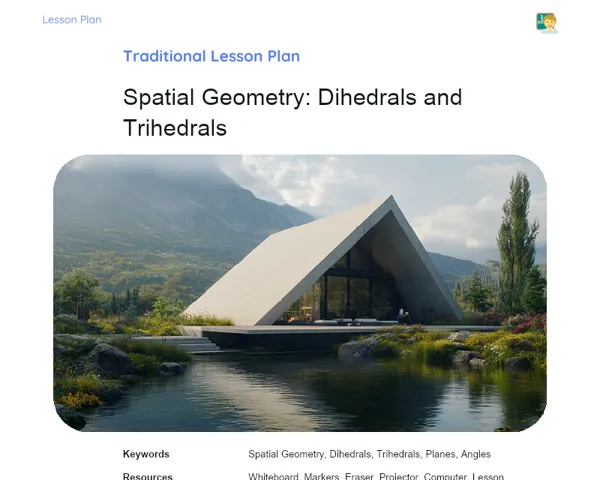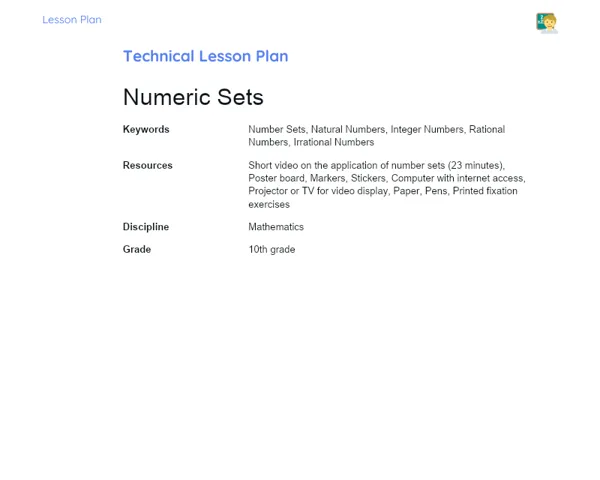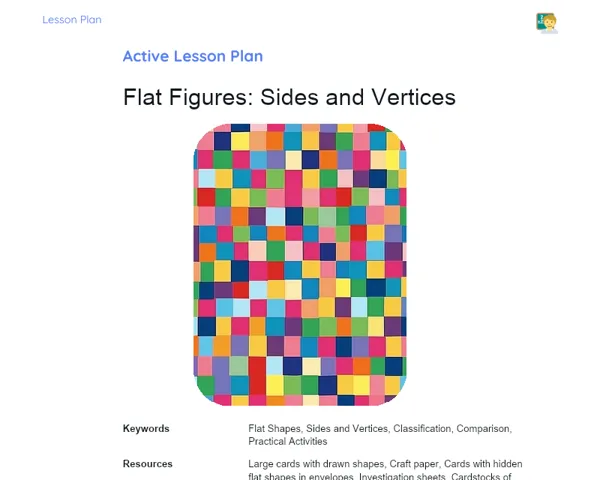Lesson Plan | Lesson Plan Iteratif Teachy | Function: Inputs and Outputs
| Keywords | Mathematical Functions, Inputs and Outputs, Algorithms, Social Media, Gamification, Data Analysis, Digital Engagement, Educational Technology, Collaboration, Problem Solving |
| Resources | Mobile phones, Computers, Internet access, Google Sheets or Excel, Gamification platform (Kahoot! or Quizizz), Presentation materials (poster boards, markers, projectors, etc.) |
| Codes | - |
| Grade | 9th grade |
| Discipline | Mathematics |
Goal
Duration: 10 to 15 minutes
This stage of the lesson plan is designed to clarify the main and secondary objectives, ensuring students understand what's expected of them. The goal is to align everyone on what will be learned, how it will be taught, and what skills will be developed throughout the lesson.
Goal Utama:
1. Accurately calculate the inputs and outputs of various functions.
2. Solve real-world problems related to calculating function inputs and outputs.
Goal Sekunder:
- Enhance logical reasoning and problem-solving skills.
- Get comfortable using digital tools to model and solve functions.
Introduction
Duration: 10 to 15 minutes
🎯 Purpose: This part of the lesson aims to create a shared understanding among students and spark an active discussion that connects them to the topic in a relatable and practical manner. It also seeks to stimulate curiosity and engagement by relating theoretical content to real-life applications that students encounter in their daily lives, thus making the learning process more meaningful.
Warming Up
🔄 Warm-up: Kick off the lesson on Functions: Inputs and Outputs by stressing its significance in mathematics and real-life applications, such as programming and economics. Ask students to use their phones to find an intriguing fact about the topic to share with the class. For instance, how functions might be used in social media algorithms to tailor each user’s news feed.
Initial Thoughts
1. What do you mean by 'input' and 'output' in a function?
2. How can functions be applied to daily life?
3. Did anyone uncover an interesting example of a function during their research? Could you share it?
4. How do you think functions are used in everyday tech like smartphones and computers?
5. Can you think of how a company could use functions to enhance its services?
Development
Duration: 70 to 80 minutes
💡 Purpose: This segment is designed to provide students with practical and contextual opportunities to apply mathematical functions in real and digital scenarios. By collaborating and using modern tech, students will enhance their skills in teamwork, problem-solving, and data analysis, making the learning process more dynamic and pertinent.
Activity Suggestions
Activity Recommendations
Activity 1 - 📊 Functions in Social Media 🌐
> Duration: 60 to 70 minutes
- Goal: Understand the real-world application of mathematical functions in social media algorithms, and how different variables can influence outcomes.
- Deskripsi Activity: In this activity, students will explore how social media algorithms use mathematical functions to personalise each user's feed. They'll collaborate in groups to model a function that describes the logic of algorithms typically seen on Instagram or TikTok.
- Instructions:
-
Split students into groups of up to 5.
-
Each group chooses a social media platform that personalises content (e.g., Instagram, TikTok, YouTube).
-
Students will investigate the criteria that these algorithms use: interactions with content, views, likes, comments, etc.
-
Using their phones, they’ll devise a simple mathematical function that models how these variables can impact a post's visibility.
-
They should utilise spreadsheet software (like Google Sheets) to simulate how various inputs (likes, comments, etc.) affect the post’s reach (the function output).
-
Each group will then present their findings and the function they created, explaining how different inputs impact outputs.
Activity 2 - 🎮 Gamification: Function Challenge 🚀
> Duration: 60 to 70 minutes
- Goal: Encourage teamwork and apply mathematical concepts in an engaging, competitive environment, enhancing active and enjoyable learning.
- Deskripsi Activity: In this activity, students engage in an interactive game where they'll solve problems relating to mathematical functions in a gamified context. The platform used will be an educational application that simulates scenarios requiring function calculations to advance in the game.
- Instructions:
-
Divide students into groups of up to 5.
-
Instruct students to access an educational gamification platform, like Kahoot! or Quizizz.
-
Students will work together to tackle mathematical challenges revolving around input and output functions, with each group using a mobile device or computer.
-
Groups should discuss their approach to solving the problems presented in the game, forming a strategy for the highest score possible.
-
You as the teacher should move around the room to assist and boost collaboration.
-
At the end, compare scores and discuss which strategies were most effective, reinforcing the concepts learned.
Activity 3 - 📈 Digital Influencers: Data Analysis 📉
> Duration: 60 to 70 minutes
- Goal: Utilise mathematical functions for real data analysis, understanding how to model and predict trends based on input and output functions.
- Deskripsi Activity: Students will assume the role of data analysts for digital influencers, using tools to evaluate growth and engagement metrics, modelling these factors as mathematical functions to forecast trends.
- Instructions:
-
Split students into groups of up to 5.
-
Each group must choose a digital influencer (real or imagined) and gather data about their social media growth (e.g., follower counts over time, engagement rates).
-
Using an online data analysis tool (such as Google Sheets or Excel), students will chart this data.
-
From the graphs, they should establish a mathematical function that describes the growth or engagement curve.
-
Students will predict how these metrics might behave in the future using the established function.
-
Each group will share their analyses and forecasts with the class, justifying their function choice and presenting the data collected.
Feedback
Duration: 20 to 25 minutes
🔍 Purpose: This stage aims to foster a moment of reflection and collaborative evaluation. The group discussion offers a chance to share experiences, while the 360° feedback promotes self-assessment and personal development. This process reinforces the concepts learned and nurtures a collaborative and respectful environment.
Group Discussion
🗣️ Group Discussion: Lead a discussion where groups share what they learned during the activities and their takeaways. Use this guide to kick-start the conversation:
- Introduction: Each group briefly presents their activity.
- Process: Ask about the process of creating and modelling their functions.
- Challenges: Get insights into the main challenges they faced and how they solved them.
- Learnings: What was their significant takeaway?
- Future Applications: Encourage reflections on applying the learnt knowledge in areas beyond social media and data analysis.
Reflections
1. 📊 How can the use of mathematical functions shape content personalisation on social media? 2. 🤔 What were the biggest hurdles faced in creating and modelling the functions? How were they managed? 3. 📚 How can the concepts of input and output functions be applied in different fields or in everyday scenarios?
Feedback 360º
🔄 360° Feedback: Instruct students to conduct a 360° feedback session. Each student should receive feedback from their group peers regarding their participation during the activity. Encourage constructive and respectful feedback following this format:
- Positive Aspect: Each student shares a positive observation about a peer’s contribution.
- Improvement: Suggest an area for potential improvement.
- Conclusion: Wrap up with a thank you for their peer's cooperation.
Conclusion
Duration: 15 to 20 minutes
💡 Purpose: This stage aims to consolidate learning in an enjoyable way, bridging mathematical concepts with real-life relevance. It reinforces acquired knowledge and inspires students to apply these concepts in various fields and everyday situations.
Summary
📚 Summary (Fun Version): Imagine stepping into the shoes of a digital detective, unraveling the mystery of function inputs and outputs! Today, we dived deep into the world of social media algorithms, became masters of functions, and even transformed into analysts of digital influencers! What a thrilling mathematical mission! 🚀💻
World
🌍 In the World: Today’s lesson showed how mathematical functions are not just abstract ideas, but vital tools impacting our digital lives. From personalising our social media feeds to predicting an influencer’s growth, functions are embedded in our modern existence.
Applications
💡 Applications: Understanding input and output functions is not only crucial for solving maths problems, but also for comprehending and improving the technology we engage with daily. Knowing how algorithms operate enables us to be more aware users and even adept creators.



